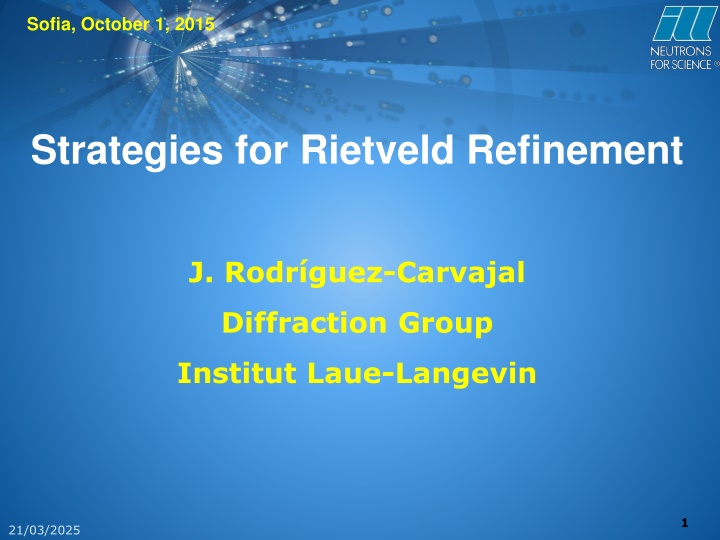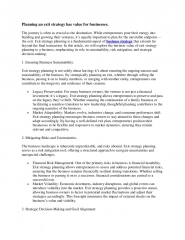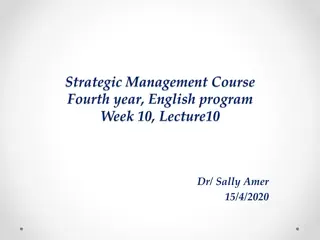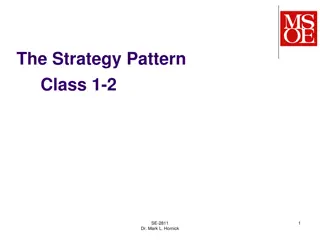
Advanced Strategies for Rietveld Refinement in Crystallography
Explore advanced techniques for Rietveld Refinement in crystallography, including model construction, data exploitation, and constraint application. Learn how to solve complex structural problems and optimize resolution for accurate results in your experiments.
Download Presentation

Please find below an Image/Link to download the presentation.
The content on the website is provided AS IS for your information and personal use only. It may not be sold, licensed, or shared on other websites without obtaining consent from the author. If you encounter any issues during the download, it is possible that the publisher has removed the file from their server.
You are allowed to download the files provided on this website for personal or commercial use, subject to the condition that they are used lawfully. All files are the property of their respective owners.
The content on the website is provided AS IS for your information and personal use only. It may not be sold, licensed, or shared on other websites without obtaining consent from the author.
E N D
Presentation Transcript
Sofia, October 1, 2015 Strategies for Rietveld Refinement J. Rodr guez-Carvajal Diffraction Group Institut Laue-Langevin 1 21/03/2025
Strategies for Rietveld Refinement 1: Once an adequate powder diffraction pattern of the problem sample is obtained one has to construct a model for the crystal structure. 2: The literature information should be exploited (similar compounds, initial model from isomorphs, ) 3: If no information is available and you are sure you have a single phase you may try to solve ab initio the crystal structure using direct methods, charge flipping or direct space methods (simulated annealing) 2 21/03/2025
Strategies for Rietveld Refinement General rule: permanently check visually the agreement between the observed and calculated pattern. Get the information on the diffractometer (Instrumental resolution) to start with good values of FWHM parameters (U,V,W,X,Y, ) Initial stages (1-2), refinement process (3-6) 1) Scale factor, wavelength, background (by hand) 2) Zero-shift, lattice parameters, few background parameter 3) Atomic positions, isotropic temperature factor, background parameters 4) Peak shape parameters, asymmetry parameters 5) Individual B factors, atom occupancies 6) Preferred Orientation, microstructural parameters Details depend on the data quality and the particular problem 3 21/03/2025
Strategies for Rietveld Refinement In case of complex structures you should apply constraints in order to better control the process of refinement and avoid divergence. 1) Symmetry Constraints (handled directly by the program in automatic mode) 2) Constraints not due to symmetry (e.g. equality of B- factors, occupation factor correlated to maintain full occupation of sites) 3) Linear Constraints 4) Restraints: Soft Distance (or Angle) Constraints 5) Rigid bodies 4 21/03/2025
Problem to solve: resolution needs Low Q-resolution Medium Q-resolution High Q-resolution =1.22 =2.52 =1.56 5 21/03/2025
Have a look into the data Run a standard sample on the chosen instrument: Determine the zero-shift and the resolution function Possible problems to be solved at the start of an experiment: Always look at the raw data: Do you see peaks?, Do they have enough intensity?, How do the peaks look like? Measuring time Are the peaks only very broad? No good crystallization, amorphous system?!
Inhomogeneous samples Er1-xLaxAl2 No symmetry reduction but a distribution of cubic unit cell parameters The system is not behaving as a solid solution
Starting the refinement In order to start refinement you need a model with lattice constants (Le Bail fit), space group (CheckGroup), and atom positions Recuperate old PCR file! (one where you know that it works) and introduce your model Peak shape parameters with starting values from instrument. Run FullProf with zero parameters: Where is the background? Are the peak positions correct?
Starting the refinement If not: Are the shifts between calculated and observed peak positions similar: zero-shift wrong Are the shifts Q-dependent: lattice constants wrong or wavelength wrong In order to refine the lattice constants the cal/obs peak positions must at least partially overlap, Start with small 2 -range at great d-spacings first. Background can be put at suited starting value by hand.
Starting the refinement Always keep a reserve PCR file in case the program diverges. Always follow the progress of the refinement by looking at the resulting fit! Refine the atomic positions (which are free to move), an isotropic temperature factor and the background Wrong atom position: Difference curve shows ups and downs , Neutrons are very sensitive to oxygen positions: be careful with x-ray data determined structures containing oxygen in presence of heavy metallic atoms O2: x=0.7108 y=0.2887 z=0.03607 O2: x=0.7158 y=0.2837 z=0.03607 Y0.1Ca0.9MnO3
Starting the refinement Wrong line shape parameters: Calculated peak shape too narrow Always better to start with a too narrow peak shape! A too broad peak shape hides the real problems!
Finishing the refinement When stop running the program and doing more cycles? All possible parameters of the model are simultaneously varied and no more improvement is observed. The agreement factors are reasonable (according to statistics, similar values as a Le Bail fit, ) and the observed versus calculated patterns match properly. - If no improvement is observed and the agreement is not good you should, something is lacking into the model! Think more! Change the model (structural or microstructural) or add new phases. The experience of the user is important -
How to use restraints and the rigid body description of molecular fragments in the program FullProf.
Restraints in FullProf = + = + 2 { ( ) ( )} M M M w y obs y calc ex res i i i i 2 ( ) ( ) D obs D calc j j + 2 ( ) j j 1 = 2 2 { ( ) ( )} w y obs y calc i i i N P i The first term corresponds always to experimental data. The observations yi(obs) may be profile intensities of a powder pattern (or several powder patterns), square of structure factors of single crystal diffraction data, flipping ratios obtained with polarised neutrons, etc.
Restraints in FullProf = + = + 2 { ( ) ( )} M M M w y obs y calc ex res i i i i 2 ( ) ( ) D obs D calc j j + 2 ( ) j j 1 = 2 2 { ( ) ( )} w y obs y calc i i i N P i The variables Dj(obs) are provided by the user and correspond to different things: expected distances between pairs of atoms, expected bond angles between triplets of atoms or any linear combination of refined parameters having a prescribed value defined by the user. The corresponding calculated values use a certain number of the P free parameters of the model under study. The standard deviations of the restraints are controlled by the user and may be changed at will. A small standard deviation means a high weight to the particular restraint.
Distance and Angles Restraints in FullProf 2 2 ( ) ( ) d obs d calc ( ) ( ) obs calc j j = + 2 ( ) M k k res j k dj k Each Distance restraint is formed by a line with the following content: CATOD1 CATOD2 ITnum T1 T2 T3 Dist Sigma The variables CATOD1 and CATOD2 correspond to names of atoms of the asymmetric unit, they should be strictly given with the same names as those appearing in the list of atoms. ITnum is the number of a rotational symmetry operator (given in the manual of FullProf) and (T1, T2, T3) corresponds to the associated translational part of the symmetry operator. This symmetry operator is applied to the position (as given in the list) of the second atom to calculate the distance to the first atom. Dist is the prescribed distance and Sigma is the user supplied standard deviation.
Distance and Angles Restraints in FullProf 2 2 ( ) ( ) d obs d calc ( ) ( ) obs calc j j = + 2 ( ) M k k res j k dj k The restraints on angles have to be provided in the PCR file after the restraints on distances. Each Angle restraint is formed by a line with the following content: CATOD1 CATOD2 CATOD3 ITnum1 ITnum2 T1 T2 T3 t1 t2 t3 Angl Sigma The central atom for the angle calculation is CATOD2. The meaning of the symbols is similar to those of the distance restraint line.
Distance and Angles Restraints in FullProf An example of the relevant part of a PCR file is shown below. . ! Pref1 Pref2 Asy1 Asy2 Asy3 Asy4 S_L D_L 1.00000 0.00000 0.09553 0.03018 0.00000 0.00000 0.00000 0.00000 0.00 0.00 701.00 721.00 0.00 0.00 0.00 0.00 ! Soft distance constraints: Ow3 Hw1 3 1.50000 0.50000 0.50000 0.99100 0.00200 Ow3 Hw2 3 1.50000 0.50000 1.50000 0.99100 0.00200 C1 C3 1 0.00000 0.00000 0.00000 1.56000 0.00200 C2 C2 -1 1.00000 1.00000 0.00000 1.56000 0.00200 ! Soft angle constraints: Hw1 Ow3 Hw2 3 1 1.5000-0.5000 0.5000 0.0000 0.0000-1.0000 105.50 0.30 O2 C1 O5 1 1 0.0000 0.0000 0.0000 0.0000 0.0000 0.0000 127.44 0.30 O1 C3 O7 1 1 0.0000 0.0000 0.0000 0.0000 0.0000 0.0000 127.44 0.30 O4 C2 O6 1 1 0.0000 0.0000 0.0000 0.0000 0.0000 0.0000 127.44 0.30 ! 2Th1/TOF1 2Th2/TOF2 Pattern # 1 ..
Distance and Angles Restraints in FullProf (Ow3 - Hw2 ): 0.99100 1.01707 -13.03562 (C1 - C3 ): 1.56000 1.56089 -0.44292 (C2 - C2 ): 1.56000 1.52922 15.38748 => Angle restraints: Ang_obs Ang_calc diff/sigma (Hw1 - Ow3 - Hw2 ): 105.50 104.24 4.20001 (O2 - C1 - O5 ): 127.44 128.42 -3.28155 (O1 - C3 - O7 ): 127.44 126.95 1.64124 (O4 - C2 - O6 ): 127.44 126.42 3.38842 CYCLE 2 (Chi2 after cyc1: 3.21, RB= 6.51) => Distance restraints: Dobs Dcalc diff/sigma (Ow3 - Hw1 ): 0.99100 0.99342 -1.21140 (Ow3 - Hw2 ): 0.99100 0.97895 6.02278 (C1 - C3 ): 1.56000 1.56117 -0.58573 (C2 - C2 ): 1.56000 1.58074 -10.37055 => Angle restraints: Ang_obs Ang_calc diff/sigma (Hw1 - Ow3 - Hw2 ): 105.50 106.46 -3.20012 (O2 - C1 - O5 ): 127.44 128.29 -2.83493 (O1 - C3 - O7 ): 127.44 127.13 1.04340 (O4 - C2 - O6 ): 127.44 128.51 -3.56923 CYCLE 3 (Chi2 after cyc2: 2.39, RB= 3.93) CYCLE 4 (Chi2 after cyc3: 2.42, RB= 4.29) CYCLE 5 (Chi2 after cyc4: 2.34, RB= 3.77) CYCLE 16 (final Chi2 : 2.34, RB= 3.77) prescription is approached depending on the hardness of the restraint. CYCLE 1 (Chi2 before: 2.36, RB= 3.78) => Distance restraints: Dobs Dcalc diff/sigma (Ow3 - Hw1 ): 0.99100 1.01588 -12.43862 In the course of the refinement the position parameters of the concerned atoms should satisfy the new user- provided restraints ( additional observations ). Progressively the => Distance restraints: Dobs Dcalc diff/sigma (Ow3 - Hw1 ): 0.99100 0.99078 0.11191 (Ow3 - Hw2 ): 0.99100 0.99203 -0.51472 (C1 - C3 ): 1.56000 1.56106 -0.52935 (C2 - C2 ): 1.56000 1.55722 1.39117 => Angle restraints: Ang_obs Ang_calc diff/sigma (Hw1 - Ow3 - Hw2 ): 105.50 105.69 -0.64191 (O2 - C1 - O5 ): 127.44 128.34 -3.01193 (O1 - C3 - O7 ): 127.44 127.07 1.24980 (O4 - C2 - O6 ): 127.44 127.65 -0.71131
Distance and Angles Restraints in FullProf For creating the strings of distance and angle restraints one can use the program Bond_Str or calculate the distance and angles from FullProf. In both cases a file named CFML_Restraints.tpcr contains the calculated distances and angles for a particular compound presented exactly as needed for the file PCR. One has to select the appropriate restraint and modify the desired value and sigma.
General Linear Restraints in FullProf A series of linear restraints corresponds to a set of equations of the form: = ( ) j i c ( ) j ( ) j p v [ ] n i i In which the c-coefficients are fixed by the user, pn[i] correspond to the value of the parameter with number n[i] in the list of free parameters, v(j)is the expected value of the restraint j to be satisfied approximately within the standard deviation (j). The meaning of the above set of equations is that the restraint term in the global cost function to be minimised has the form: 2 ( ) j ( ) j i v c p [ ] n i = 2 i M res ( ) j j
General Linear Restraints in FullProf A series of linear restraints corresponds to a set of equations of the form: = ( ) j i c ( ) j ( ) j p v [ ] n i i Introducing general linear restraints in FullProf can be done using the flag NLI and adding additional information at the end of the PCR file. The flag NLI corresponds to the number of linear restraints provided by the user. If NLI>0, the program expect to read additional information just after the list given for Nre relations (parameters to be constrained in a box) in the PCR file, or after the simulated annealing mode items. This additional information is constituted by the following items: NLIpairs of lines containing First line: Name of the restraint (up to 8 characters), number of coefficients, (maximum 10), value of the restraint, sigma of the restraint. Second line: Up to 10 pairs of (coefficient, parameter number) values.
General Linear Restraints in FullProf c p v = ( ) j i ( ) j ( ) j [ ] n i i Ti atoms doping a ferrite may be distributed in 3 sites. The refinement codes of the occupation parameters are: 231.0, 241.0 and 251.0. The other element in presence is Fe with codes for the same sites 261.0, 271.0 and 281.0. We can introduce three restraints corresponding to full occupancy of the different sites (0.375, 1.00 and 0.125) and another to fix the chemical composition (0.45 for Ti). !Set of 4 linear restraints named Site_a, Site_b, Site_c and ChemComp: !Identifier, number of coeff., value,sigma/List of coeff & Parameters Site_a 2 0.375000 0.000100 1.0000 23 1.0000 26 Site_b 2 1.000000 0.000100 1.0000 24 1.0000 27 Site_c 2 0.125000 0.000100 1.0000 25 1.0000 28 Chemcomp 3 0.450000 0.000100 1.0000 23 1.0000 24 1.0000 25
Rigid Bodies in FullProf The atoms positions of a known molecular fragment are not independent variables. The whole object may be treated as a rigid body, so that we need only six free parameters for defining completely its position in the unit cell. We have two Cartesian reference frames: (1) Internal: it may be arbitrarily defined (2) Crystallographic: related to crystallographic the unit cell
Rigid Bodies in FullProf: Molecular reference frame The internal coordinates of the atoms constituting the rigid group can be given in the following ways (all distances are given in and angles in radians or degrees): i zm 1: Spherical coordinates: (ri, i, i) ri zi ym 2: Cartesian coordinates (xi, yi, zi) yi i i xi 3: Cylindrical coordinates ( i, i, zi) xm 4: Z-matrix formulation
zm I1 Example: Para-di-Iodo-Benzene The internal coordinates of the atoms constituting the rigid group given in spherical coordinates: (ri, i, i) xm C1 C6 C2 ( ri, i, i) I1 : (3.500, 0.0000, 0.00) C1 : (1.394, 0.0000, 0.00) C2 : (1.394, 1.0472( /3), 0.00) C3 : (1.394, 2.0944(2 /3), 0.00) I2 : (3.500, 3.1416( ), 0.00) . C3 C5 C4 I2
H2 7 x C2 8 Centro-symmetric molecule Only half molecule is needed d=1.4, d =1.1 C1 3 H3 C3 2 4 1 y A1 5 H4 9 6 C4 C5 H5 10 # Nam dist theta dihedral N1 N2 N3 1 A1 0 0 0 0 0 0 2 C1 d/2 0 0 1 0 0 3 C2 d 120 0 2 1 0 4 C3 d 120 0 3 2 1 5 C4 d 120 0 4 3 2 6 C5 d 120 0 5 4 3 7 H2 d 120 180 3 2 1 8 H3 d 120 180 4 3 2 9 H4 d 120 180 5 4 3 10 H5 d 120 180 6 5 4 Z-matrix
dimethyl-2,6-naphthalenedicarboxylate SPG: P 21/c a = 13.4193 b = 6.14869 c = 7.15257 = 100.399 Ci 1
H11 dimethyl-2,6-naphthalenedicarboxylate 0.95 H12 1.47 O8 H30 H14 C10 H13 0.96 1.33 C21 C3 H29 C20 1.39 1.51 1.18 C2 C4 1.39 C7 O9 O24 A1 1.39 1.42 C19 C5 C18 1.43 C6 0.96 C17 H15 C22 0.96 H28 C25 H16 H31 O23 H27 H26
H11 dimethyl-2,6-naphthalenedicarboxylate H12 O8 x H30 H14 C10 H13 C20C21 C2C3 H29 C4 C7 y O9 O24 A1 C19 C5 C18 C6 C17 H15 C22 H28 C25 H16 H31 O23 H27 Nam d theta phi-dih N1 N2 N3 A1 0 0 0 0 0 0 C2 d/2 0 0 1 0 0 C3 d 120 0 2 1 0 C4 d 120 0 3 2 1 C5 d 120 0 4 3 2 C6 d 120 0 5 4 3 C7 d 120 180 4 3 2 O8 d 120 0 7 4 3 O9 d 120 180 7 4 3 C10 d 120 0 8 7 9 H26 Z-matrix Centro-symmetric molecule Only half molecule is needed d=1.4, d =1.50, d =1.30
Rigid Bodies in FullProf: Crystal reference frame The molecular reference frame is placed in the crystal reference frame as shown in the figure. ZC zm Six free parameters are needed to place in an arbitrary position the molecular frame. Coordinates of the origin: Cartesian Fractional (xo, yo, zo) (Xo, Yo, Zo) ( , , ) Pseudo-Euler angles om xm ym YC XC
Rigid Bodies in FullProf: Crystal reference frame c The molecular reference frame is placed in the crystal reference frame as shown in the figure. zm m Zc c x m d Six free parameters are needed to place in an arbitrary position the molecular frame. o m c, m y m Yc Oc b Xc Coordinates of the origin: (Xo, Yo, Zo) Cartesian or Fractional coordinates ( , , ) Euler angles c a
Rigid Bodies in FullProf: Interpretation of the Euler angles One can consider an initial position where the two Cartesian frames coincide. The first rotation, , applied to the rigid body rotates the internal frame around the ZC axis YC ym ZC zm=zm ym cos sin sin cos 0 0 1 xm = ( ) R Z XC xm C 0 0
Rigid Bodies in FullProf: Interpretation of the Euler angles The second rotation, , applied to the rigid body rotates the previous position of the rigid body around the YC axis ZC zm ym YC cos 0 1 0 sin = ( ) 0 0 R Y XC xm C sin cos
Rigid Bodies in FullProf: Interpretation of the Euler angles ZC The third rotation, , applied to the rigid body rotates the previous position of the rigid body around the ZC axis zm ym YC cos sin sin cos 0 0 1 = xm ( ) R Z XC C 0 0
Rigid Bodies in FullProf: PCR file To access the rigid body formulation one must put JBT=4 A free atom must not contain numbers in the label A rigid body group has the same two letters label plus a number from 1 to 99
Rigid Bodies in FullProf: PCR file Naphthalene D9 ! !Nat Dis Ang Pr1 Pr2 Pr3 Jbt Irf Isy Str Furth ATZ Nvk Npr More 10 0 0 0.0 0.0 1.0 4 4 0 0 0 0.0 0 0 0 ! P 21/a <--Space group symbol !Atom Typ x y z B Occ P6 THETA PHI Spc ! dist Bond-ang Torsion-ang X0 Y0 Z0 CHI Connectiv DEG KIND NA1 ZE 0.00000 0.00000 0.00000 0.50000 1.00000 4.00000 111.260 -152.972 0 0.00 0.00 0.00 0.00 0.00 0.00 11.00 21.00 0.00000 0.000 0.000 0.00000 0.00000 0.00000 113.836 0.000 1 3 0.00 0.00 0.00 0.00 0.00 0.00 31.00 NA2 C 0.04763 -0.10530 0.03761 0.31749 1.00000 1 0 0 0 0.00 0.00 0.00 61.00 0.00 0.71000 0.000 0.000 0.00 0.00 0.00 NA3 C 0.11120 -0.16730 0.22264 0.44746 1.00000 2 1 0 0 0.00 0.00 0.00 71.00 0.00 1.42000 120.000 0.000 0.00 0.00 0.00 NA4 C 0.07955 -0.01869 0.33247 0.61211 1.00000 3 2 1 0 0.00 0.00 0.00 81.00 0.00 1.42000 120.000 0.000 0.00 0.00 0.00 NA5 C -0.01565 0.19194 0.25729 0.59487 1.00000 4 3 2 0 0.00 0.00 0.00 91.00 0.00 1.42000 120.000 0.000 0.00 0.00 0.00 . . . . .
Rigid Bodies in FullProf: PCR file Naphthalene D9 (Rigid Body Spherical coordinates) ! !Nat Dis Ang Pr1 Pr2 Pr3 Jbt Irf Isy Str Furth ATZ Nvk Npr More 10 0 0 0.0 0.0 1.0 4 4 0 0 0 256.348 0 0 1 ! P 21/a <--Space group symbol !Atom Typ x y z B Occ P6 THETA PHI Spc ! r/xc/rho the/yc/phi phi/zc/z X0 Y0 Z0 CHI P16:SAT DEG KIND NA1 ZE 0.00000 0.00000 0.00000 0.50000 1.00000 1.00000 110.720 -153.026 0 0.00 0.00 0.00 0.00 0.00 0.00 11.00 21.00 0.00000 0.000 0.000 0.00000 0.00000 0.00000 113.642 0.000 1 0 0.00 0.00 0.00 0.00 0.00 0.00 31.00 NA2 C 0.04848 0.00000 0.03792 0.42742 1.00000 0 0 0 0 0.00 0.00 0.00 61.00 0.00 0.71879 90.000 0.000 0.00 0.00 0.00 NA3 C 0.11318 0.16653 0.22257 0.57700 1.00000 0 0 0 0 0.00 0.00 0.00 71.00 0.00 1.87412 90.000 40.893 0.00 0.00 0.00 NA4 C 0.08224 -0.01794 0.32981 0.65930 1.00000 0 0 0 0 0.00 0.00 0.00 81.00 0.00 2.52915 90.000 73.898 0.00 0.00 0.00 NA5 C -0.01238 0.18997 0.25581 0.60049 1.00000 0 0 0 0 0.00 0.00 0.00 91.00 0.00 2.52915 90.000 106.102 0.00 0.00 0.00 . . . . .
Rigid Bodies in FullProf: PCR file !Nat Dis Ang Pr1 Pr2 Pr3 Jbt Irf Isy Str Furth ATZ Nvk Npr More 6 0 0 1.0 0.0 0.0 4 0 0 0 12 1335.628 0 5 0 ! P b c a <--Space group symbol !Atom Typ x y z B Occ P6 THETA PHI Spc ! d theta phi X0 Y0 Z0 CHI P16:SAT Pi1 I 0.17416 0.04667 0.31061 0.00000 1.00000 -5.00000 1.00200 0.11300 0 0.00 0.00 0.00 0.00 0.00 0.00 185.00 195.00 3.50000 0.00000 0.00000 0.00000 0.00000 0.00000 -0.44622 0.00000 0.00 0.00 0.00 0.00 0.00 0.00 205.00 Pi2 C 0.06937 0.01859 0.12371 0.00000 1.00000 0 0.00 0.00 0.00 0.00 0.00 1.39400 0.00000 0.00000 0.00 0.00 0.00 Pi3 C 0.07282 -0.05408 -0.08933 0.00000 1.00000 0 0.00 0.00 0.00 0.00 0.00 1.39400 1.04720 0.00000 0.00 0.00 0.00 Pi4 C 0.00345 -0.07266 -0.21304 0.00000 1.00000 0 0.00 0.00 0.00 0.00 0.00 1.39400 2.09440 0.00000 0.00 0.00 0.00 Pi5 D 0.13007 -0.09659 -0.15956 0.00000 1.00000 0 0.00 0.00 0.00 0.00 0.00 2.49000 1.04720 0.00000 0.00 0.00 0.00 Pi6 D 0.00616 -0.12979 -0.38054 0.00000 1.00000 0 0.00 0.00 0.00 0.00 0.00 2.49000 2.09440 0.00000 0.00 0.00 0.00
Para-di-Iodo-Benzene (Sim.Annealing) ! !Nat Dis Ang Pr1 Pr2 Pr3 Jbt Irf Isy Str Furth ATZ Nvk Npr More 6 0 0 1.0 0.0 0.0 4 4 0 0 0 0.00 0 0 0 ! P b c a <--Space group symbol !Atom Typ x y z B Occ P6 THETA PHI Spc ! d theta phi X0 Y0 Z0 CHI P16:SAT Pi1 I 0.17439 0.04548 -0.30989 0.00000 1.00000 1.00000 2.05548 0.06590 0 0.00 0.00 0.00 0.00 0.00 0.00 11.00 21.00 PCR-PDIB 3.50000 -0.09100 -0.09100 0.00000 0.00000 0.00000 -2.62905 0.00000 0.00 0.00 0.00 0.00 0.00 0.00 31.00 Pi2 C 0.06946 0.01811 -0.12342 0.00000 1.00000 0 0.00 0.00 0.00 0.00 0.00 1.39400 -0.09100 -0.09100 0.00 0.00 0.00 . . . . . . . . . . . . . . . . . . . ! Limits for selected parameters (+ steps & BoundCond for SA): 1 0.0000 3.1416 0.5000 1 Theta 2 -3.1416 3.1416 0.5000 1 Phi 3 -3.1416 3.1416 0.5000 1 Chi ! T_ini Anneal Accept NumTemps NumThCyc InitConf 8.000 0.900 0.020 80 0 0 ! NCyclM Nsolu Num_Ref Nscalef NAlgor 200 1 71 1 1 Part of a PCR file showing the use of the simulated anneling method to determine the orientation of the molecule of I2C6D4. The center of the molecule is at the origin and only three angles are needed to fix the position of the molecule in the unit cell.
=> **** SIMULATED ANNEALING SEARCH FOR STARTING CONFIGURATION **** => Initial configuration cost: 77.53 => Initial configuration state vector: => Theta Phi Chi => 1 2 3 => 1.3807 2.4672 -3.0110 => NT: 1 Temp: 8.00 (%Acc): 23.50 <Step>: 5.2360 <R-factor>: 44.4302 => NT: 6 Temp: 4.72 (%Acc): 30.50 <Step>: 0.3496 <R-factor>: 23.8774 S.A. run with pdIoB => NT: 11 Temp: 2.79 (%Acc): 39.33 <Step>: 0.1440 <R-factor>: 13.4990 => NT: 21 Temp: 0.97 (%Acc): 38.50 <Step>: 0.0530 <R-factor>: 6.3417 => NT: 33 Temp: 0.27 (%Acc): 36.17 <Step>: 0.0179 <R-factor>: 4.3854 =>BEST CONFIGURATIONS FOUND BY Simulated Annealing FOR PHASE: 1 => -> Configuration parameters ( 71 reflections): => Sol#: 1 RF2= 3.928 :: => Theta Phi Chi => 1 2 3 => 0.9401 0.1464 2.7477 => CPU Time: 25.177 seconds => 0.420 minutes Simplified screen capture of the FullProf output when running in the simulating annealing mode for the example of figure 3. The first picture of the structure corresponds to the starting configuration. The final result is also displayed.
Initial configuration: RF= 77.53% Final configuration: RF= 3.93%






















